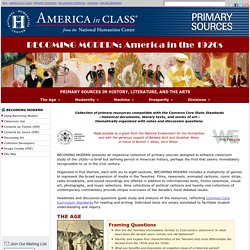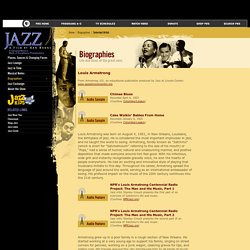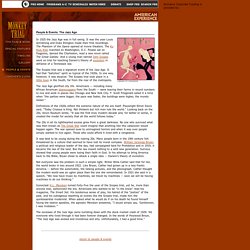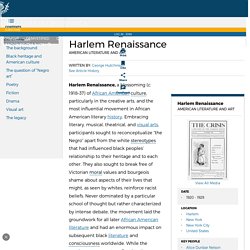

America in the 1920s, Primary Sources for Teachers, America in Class, National Humanities Center. Collection of primary resources compatible with the Common Core State Standards—historical documents, literary texts, and works of art—thematically organized with notes and discussion questions.

Made possible by a grant from the National Endowment for the Humanities and with the generous support of Barbara Asch and Jonathan Weissin honor of Burton J. Weiss, Jon's father. BECOMING MODERN presents an expansive collection of primary sources designed to enhance classroom study of the 1920s—a brief but defining period in American history, perhaps the first that seems immediately recognizable to us in the 21st century. Organized in five themes, each with six to eight sections, BECOMING MODERN includes a multiplicity of genres to represent the broad expansion of media in the Twenties.
Ku Klux Klan: Extraordinary images from a divisive era capture a day of reckoning as 50,000 white supremacists marched on Washington DC. By Hannah Roberts Updated: 17:32 GMT, 12 February 2012 The eerie, ghost-like hordes boldly parade on the country’s most illustrious avenue, in a performance that feels unthinkable in today's world.

The Roaring Twenties. Jazz Age - Louis Armstrong. Louis Armstrong From Armstrong 101, an educational publication produced by Jazz at Lincoln Center: www.jazzatlincolncenter.org.

Louis Armstrong was born on August 4, 1901, in New Orleans, Louisiana, the birthplace of jazz. He is considered the most important improviser in jazz, and he taught the world to swing. Armstrong, fondly known as "Satchmo" (which is short for "Satchelmouth" referring to the size of his mouth) or "Pops," had a sense of humor, natural and unassuming manner, and positive disposition that made everyone around him feel good. With his infectious, wide grin and instantly recognizable gravelly voice, he won the hearts of people everywhere.
Armstrong grew up in a poor family in a rough section of New Orleans. As the young Armstrong began to perform with pick-up bands in small clubs and play funerals and parades around town, he captured the attention and respect of some of the older established musicians of New Orleans. PBS - Jazz Age. People & Events: The Jazz Age In 1925 the Jazz Age was in full swing.

It was the year Louis Armstrong and Duke Ellington made their first recordings. The Phantom of the Opera opened at movie theaters. The Ku Klux Klan marched on Washington, D.C. People sat on flagpoles, danced the Charleston, read a new novel called The Great Gatsby. The Scopes trial was a signature event of the Jazz Age. American literature and art. American literature and art Harlem Renaissance Harlem Renaissance, a blossoming (c. 1918–37) of African American culture, particularly in the creative arts, and the most influential movement in African American literary history.

Embracing literary, musical, theatrical, and visual arts, participants sought to reconceptualize “the Negro” apart from the white stereotypes that had influenced black peoples’ relationship to their heritage and to each other. They also sought to break free of Victorian moral values and bourgeois shame about aspects of their lives that might, as seen by whites, reinforce racist beliefs. Never dominated by a particular school of thought but rather characterized by intense debate, the movement laid the groundwork for all later African American literature and had an enormous impact on subsequent black literature and consciousness worldwide. Test Your Knowledge. The Rise and Fall of Jim Crow - Harlem Renaissance. Harlem Renaissance - Black History. The northern Manhattan neighborhood of Harlem was meant to be an upper-class white neighborhood in the 1880s, but rapid overdevelopment led to empty buildings and desperate landlords seeking to fill them.

In the early 1900s, a few middle-class black families from another neighborhood known as Black Bohemia moved to Harlem, and other black families followed. Some white residents initially fought to keep African Americans out of the area, but failing that many whites eventually fled. Outside factors led to a population boom: From 1910 to 1920, African American populations migrated in large numbers from the South to the North, with prominent figures like W.E.B. Du Bois leading what became known as the Great Migration. The Roaring 20's: Crash Course US History #32. USA 1920s - Boom and Bust. PBS Prohibition Documentary Part 1 of 3 A Nation of Drunkards. PBS Prohibition Documentary Part 2 of 3 A Nation of Scofflaws. PBS Prohibition Documentary Part 3 of 3 A Nation of Hypocrites. The Wall Street Crash. BBC Radio 4 - Letter from America by Alistair Cooke, Black Monday 1987, Black Tuesday 1929.